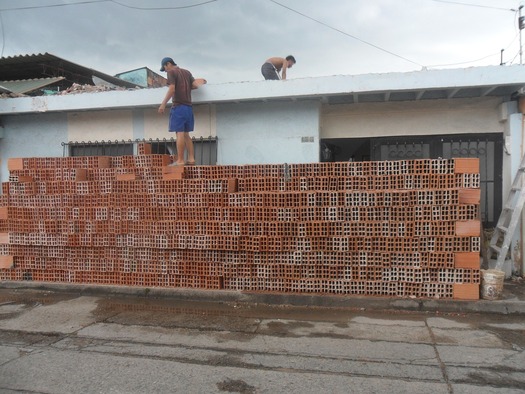
Starting a home remodeling project is like carving a dream into reality. But in the midst of all the excitement and fresh starts, water damage can strike out of nowhere like a storm in the middle of creation. Do not worry, though; this guide will be your compass, guiding you through the rough waters of dealing with water damage during home remodeling.
From prevention tactics to quick answers, each part is a beacon of wisdom, guaranteeing that your renovation voyage sails smoothly despite the rare storm. Let us dive into the art of mastering the waves and changing obstacles into chances for a restored sanctuary.
Dreams are woven into every paint job and architectural detail when it comes to home remodeling, but reality can sometimes make an unexpected appearance—water damage is one such instance. As we examine the subtleties of addressing these issues during the remodeling process, let us embrace this as a journey together where experience and advice collide.
I hope your house makeover proves to be more than just a makeover; it should be an example of tenacity, flexibility, and unwaveringly pursuing your dreams.
See also our post on A Comprehensive Guide on How to Repair Water-Damaged Landscaping
Pre-Remodeling Assessment
Before the first hammer strikes, a thorough assessment sets the stage for a water-smart remodeling journey.
Pre-Remodeling Assessment:
- Comprehensive Inspection: Conduct a comprehensive inspection of your home. Identify existing water damage, including leaks, seepage, or areas prone to flooding.
- Understanding Vulnerable Areas: Recognize vulnerable areas such as basements, attics, and around windows. These areas may need extra attention during remodeling to prevent water-related issues.
- Evaluate Drainage Systems: Assess the efficiency of your drainage systems. Make sure gutters and downspouts are clear of debris, directing water away from the foundation.
- Check Plumbing Systems: Examine your plumbing systems for potential leaks or weaknesses. Addressing plumbing issues before remodeling prevents exacerbation during the construction process.
- Roof Inspection: Inspect the roof for missing or damaged shingles. A sound roof is your primary defense against water intrusion during remodeling.
Waterproofing Strategies
Fortify your home against potential water damage with strategic waterproofing measures.
Waterproofing Strategies:
- Seal Foundation Cracks: Prioritize sealing any existing foundation cracks. Waterproofing the foundation creates a barrier against water seepage.
- Water-Resistant Coatings: Apply water-resistant coatings to vulnerable areas, such as basement walls. These coatings create a protective shield, preventing moisture penetration.
- Proper Insulation: Ensure proper insulation in areas prone to condensation. Well-insulated spaces are less likely to experience moisture-related issues.
- Window and Door Sealing: Check and reinforce the seals around windows and doors. Tight seals prevent water from infiltrating your home during remodeling.
- Sump Pump Installation: Consider installing a sump pump in the basement. This device helps manage water accumulation and mitigates the risk of flooding.
Swift Response to Water Damage
In the event of water damage discovery during remodeling, a swift response is crucial to minimize the impact.
Swift Response Strategies:
- Immediate Identification: Act swiftly if water damage is identified. Identify the source of the issue to address it promptly.
- Temporary Fixes: Implement temporary fixes if needed. Use waterproof materials or sealants to create a barrier until a more permanent solution can be applied.
- Isolate Affected Areas: Isolate the affected areas to prevent the spread of water damage. This may involve sealing off certain rooms or sections during the remodeling process.
- Contact Professionals: Engage water damage restoration professionals. Their expertise ensures a thorough assessment and effective mitigation strategies.
- Adjust Remodeling Plans: If necessary, adjust your remodeling plans based on the extent of the water damage. Flexibility is key to managing unexpected challenges.
Integrating Drainage Solutions
Effective drainage solutions play a pivotal role in preventing and managing water damage during remodeling.
Drainage Solutions:
- French Drains Installation: Consider installing French drains around your home. These drains redirect water away from the foundation, reducing the risk of basement flooding.
- Grading Adjustments: Ensure proper grading around your home. The land should slope away from the foundation to prevent water pooling.
- Landscaping Strategies: Implement landscaping strategies that promote water runoff. This includes strategically placed plants and permeable surfaces.
- Regular Gutter Maintenance: Perform regular maintenance on gutters and downspouts. Clear debris to ensure efficient water flow and prevent overflowing.
- Rain Barrels for Collection: Install rain barrels to collect rainwater for later use. This sustainable practice not only conserves water but also reduces the risk of water pooling around your home.
See also our post on 10 Benefits of Professional Cleaning Services for Data Centers
Communication with Remodeling Team
Open and effective communication with your remodeling team is essential for addressing and preventing water damage.
Communication Strategies:
- Transparent Project Overview: Provide a transparent overview of your home, including any existing water-related issues. This ensures your remodeling team is well-informed.
- Continuous Updates: Maintain continuous communication with your remodeling team throughout the project. Updates on progress and any identified challenges foster a collaborative approach.
- Immediate Reporting: If water damage is discovered during remodeling, report it to your remodeling team immediately. Timely reporting allows for swift adjustments to the project plan.
- Consultation with Professionals: Consult water damage restoration professionals in collaboration with your remodeling team. Their insights contribute to effective solutions.
- Shared Problem-Solving: Foster a culture of shared problem-solving. When unexpected challenges arise, collaborative efforts between homeowners and the remodeling team lead to more successful outcomes.
Insurance Preparedness
Being prepared with the right insurance coverage is crucial for managing water damage risks during remodeling.
Insurance Preparedness:
- Review Existing Coverage: Review your existing homeowner’s insurance coverage. Ensure it includes protection against water damage and covers remodeling activities.
- Additional Endorsements: Consider additional endorsements or riders for specific water-related risks. Consult with your insurance provider to tailor coverage to your remodeling needs.
- Document Changes: Keep detailed records of remodeling-related changes. Documenting alterations ensures that your insurance accurately reflects the current state of your home.
- Emergency Contact Information: Keep emergency contact information for your insurance provider readily available. Prompt communication is essential in the event of a claim.
- Understanding Deductibles: Understand your insurance deductibles for water damage claims. Being aware of the financial implications helps you make informed decisions.
Post-Remodeling Maintenance
Completing your remodeling project doesn’t mark the end; proactive post-remodeling maintenance is vital.
Post-Remodeling Maintenance:
- Regular Inspections: Conduct regular inspections of the remodeled areas. Look for any signs of water damage or issues that may have emerged during the remodeling process.
- Scheduled Maintenance Checks: Implement scheduled maintenance checks for waterproofing measures. Ensure that seals, coatings, and drainage systems remain effective.
- Educate Household Members: Educate household members about the importance of vigilant maintenance. Encourage reporting of any water-related concerns promptly.
- Sustainable Landscaping: Continue sustainable landscaping practices. Maintaining proper drainage and water conservation contributes to long-term home health.
- Annual Roof Inspections: Schedule annual roof inspections to catch any potential issues early. A well-maintained roof is a fundamental defense against water intrusion.
See also our post on Water Damage Restoration Guide: How to Restore Property After a Disaster
Conclusion
As we conclude this guide on handling water damage during home remodeling, envision your home transformation not just as a project but as a dynamic journey. With resilience, preparation, and a proactive approach, you can navigate the waters of remodeling challenges and emerge with a revitalized, water-smart haven. May your remodeled home stand not just as a testament to design but as a tribute to the homeowner’s mastery in steering through challenges and crafting a dream home that endures.






